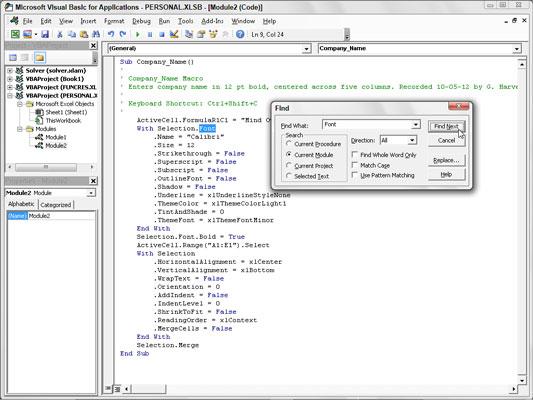
- #Write vba code in excel for mac how to#
- #Write vba code in excel for mac for mac#
- #Write vba code in excel for mac code#
- #Write vba code in excel for mac mac#
#Write vba code in excel for mac code#
First, let's look at the code we need: Copying Cells with VBAĬopying in VBA is quite easy. Let’s try to copy all the data in columns A through C into D through F using VBA. This is a sample employee database with the names, departments, and salaries of some employees.

Open the project file you downloaded earlier and make sure the "Copy, cut, and paste" sheet is selected.
#Write vba code in excel for mac how to#
Let's see how to code a macro that will copy data and move it around in a spreadsheet. What if your spreadsheet could do that for you? With a macro, it could. Now, let’s get started with actual coding!Ĭopying and pasting is the simplest way to move data around, but it's still tedious. When you’re done, go to the "View" tab, click the tiny arrow below the "Record Macro" button again and select "Stop recording". Perform the actions in your spreadsheet you want to be turned into a macro. Type in the name of your macro and click "OK" to start the recording. Go to the "View" tab of the ribbon and click the tiny arrow below the "Macros" button. But it's still a handy way to get started. You'll still need to type or edit code manually sometimes. There are limitations to this, so you can't automate every task or become an expert in automation by only recording. When you’re done, tell Excel to stop recording and you can use this new macro to repeat the actions you just performed again and again. Then you perform the tasks you want to be translated into VBA code. When you record a macro, you tell Excel to start the recording. Later on, it serves as handy storage for code that you don’t need to memorize. Recording a macro is a good way of getting to know the basics of VBA. The main focus of this article is on the former, but recording a macro is so simple and handy, it's worth exploring too. Have questions or feedback about Office VBA or this documentation? Please see Office VBA support and feedback for guidance about the ways you can receive support and provide feedback.There are two ways to make a macro: code it or record it.
#Write vba code in excel for mac mac#
#Write vba code in excel for mac for mac#
Office 2016 for Mac doesn't support third-party COM add-ins. Support for COM add-ins that use custom ribbon controls For commands that are compatible with Office 2016 for Mac, see idMSOs compatible with Office 2016 for Mac. Most familiar Office Fluent Control Identifiers are compatible with Office for Mac.

Ribbon customization featureĪbility to customize the ribbon using Ribbon XMLĪbility to invoke Macros using custom ribbon controlsĪbility to include and invoke Office Fluent Controls within a custom ribbon tab Note that there are some differences in ribbon support in Office 2016 for Mac and Office for Windows. Office 2016 for Mac supports ribbon customization using Ribbon XML. IFDEF between different Mac Office versions at compile time.

Request a user's permission to access multiple files at once.Ĭall external AppleScript scripts from VB. The following VBA commands are new and unique to Office 2016 for Mac. Creating an installer or putting user contentįor instructions on creating an installer for your add-in, please refer to the article here: Installing User Content in Office 2016 for Mac New VBA commands for Office 2016 for Mac You can minimize the effects of sandboxing by using the new commands described in the following section. This affects any add-ins or macros that involve file access or communication across processes. Sandboxing restricts the apps from accessing resources outside the app container. Unlike other versions of Office apps that support VBA, Office 2016 for Mac apps are sandboxed.

Outlook for Mac and OneNote for Mac do not support VBA.


 0 kommentar(er)
0 kommentar(er)
